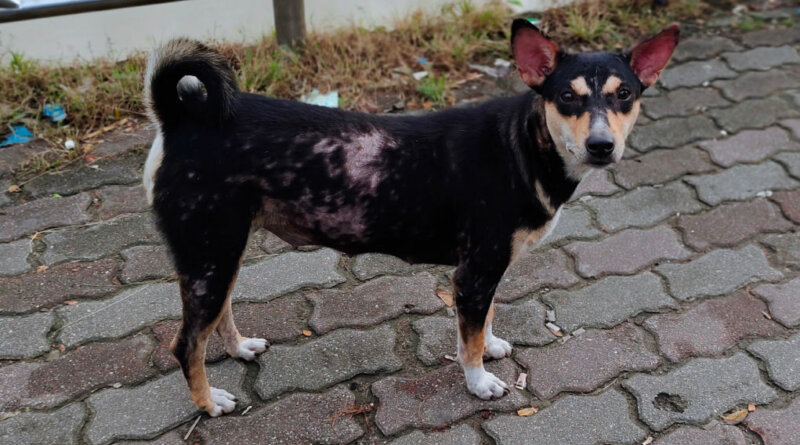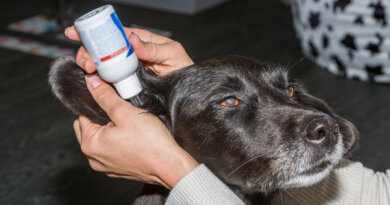Causes, Symptoms, and Treatment – Top Dog Tips
Dogs have a habit of scratching and biting themselves. Most often, this behavior is nothing to be concerned about but could indicate an underlying skin infection.
Skin infections are more common in dogs than in humans.
This is because dogs have a lot of furs, making it easier for bacteria to thrive in warm and moist environments.
Also, dogs have many unhygienic habits, which further increases the risk.
Are you concerned about that weird-looking rash on your dog’s belly? Not sure how to help your pet recover? Don’t worry!
This article will tell you everything you need to know about impetigo in dogs.
From the types and causes to the symptoms and treatment, all the information you need is right here!
What is Impetigo in Dogs?
Impetigo is a skin infection and is most common in puppies.
It is characterized by rashes and infected bumps on the hairless areas of a dog’s skin.
These areas include the chin and the abdomen region. Impetigo also results in crusty circular lesions.
Adult dogs are susceptible to impetigo, but puppies are at higher risk. If your dog scratches the infected area, the blisters can pop.
This results in a lot of pain and releases the stored pus, spreading the infection further.
Impetigo is not a fatal disease but can indicate a more serious underlying condition. But the prognosis will be good if discovered early.
This is why you should take your dog for regular checkups at the vet.
Types of Impetigo in Dogs
There are three types of impetigo found in dogs. Some are worse than others.
It is best to keep on the safe side and get your pet examined by a professional.
Surface pyoderma
As the name suggests, this only affects the top layer of skin and occurs where there is no hair.
It is mostly mild and can go away by itself.
Superficial bacterial folliculitis
This type of infection can affect areas of the skin with hair and even the skin folds.
Antibiotics will stop this infection before it spreads further.
Deep pyoderma
Excessive scratching can cause the skin to break, allowing the infection to get deep into the layers of tissue.
This infection can keep getting worse if not treated properly.
Causes of Impetigo in Dogs
Impetigo, also known as a staph infection, is a bacterial infection of the skin. The staphylococcus bacteria is responsible, and it has many strains.
Some strains are contagious and can affect both dogs and humans.
The causes of impetigo are not well understood, but damage to the skin and a compromised immune system are believed to be the primary cause.
The known causes of impetigo in dogs include:
- Flea bites
- Insect bites
- Mange
- Urine scalding
- Allergies
- Weak endocrine system
- Weak immune system
If your dog is not as excited about the afternoon walk anymore or you’re noticing a change in habits, then it is time to visit the vet.
Symptoms of Impetigo in Dogs
Skin infections often go unnoticed by dog owners as impetigo rarely affects the dog’s behavior.
Your dog may appear completely normal, but you must regularly check for signs of impetigo. These signs include:
- Patches of red skin.
- Areas filled with bumps or rashes.
- Blisters filled with pus.
- Crusty or scaly lesions.
- Loss of hair.
Excessive scratching and licking are indications that something is wrong. Your dog may also bite the area of the infection.
Behavioral changes such as depression and weight loss can also be caused by impetigo, but this is rare.
Treatment for Impetigo in Dogs
Oral antibiotics are a great option to treat impetigo. But, they must be taken regularly for an extended period of several weeks.
If your dog does not want to take oral pills, we recommend putting them in a treat. You can also check out our article on how to give a dog medicine.
Using an antibacterial shampoo is a great way to prevent and heal minor skin infections. Like most veterinarians, we recommend the Douxo S3.
It has excellent customer reviews making it the go-to choice for dog owners.
Antibacterial creams and ointments are also good options depending on the severity of the infection.
Many vets recommend using an ointment for mild infections. If the infection does not subside, you should consider oral antibiotics after consulting your veterinarian.
Staph infections are often contagious and can be transferred from dogs to humans. This is why you should take extra precautions if your dog has impetigo.
Always wear gloves when bathing your dog to prevent direct contact with the infected region.
Natural remedies are also a great option for mild infections.
Watch this amazing YouTube video by Dr. Andrew Jones to learn more about effective natural remedies for impetigo:
Diet for Dogs with Impetigo
Skin irritation and rashes can be caused by allergies.
To rule this out, we recommend that you make homemade dog food with a limited number of ingredients.
Ensure a balanced and healthy diet for your dog so that recovery is swift.
Talk to your veterinarian and ask if your dog needs supplementation. Also, you must tell your vet if your dog is currently taking any other medication.
This is important to prevent any unwanted interaction between different medications.
Impetigo in Dogs Summary
Maintaining hygiene is extremely important for preventing skin infections.
You must bathe your dog regularly and check them for red rashes and infected bumps. A healthy diet and regular exercise are required for a speedy recovery.
Impetigo is not life-threatening and usually resolves within a few weeks with the proper treatment.
There are many natural remedies that you can try, and antibacterial shampoos and ointments are widely available.
If the infection keeps spreading, then you should seek professional help.
Let us know how you keep your dog from getting skin infections in the comments below.
READ NEXT: Hyperpigmentation In Dogs
Related







